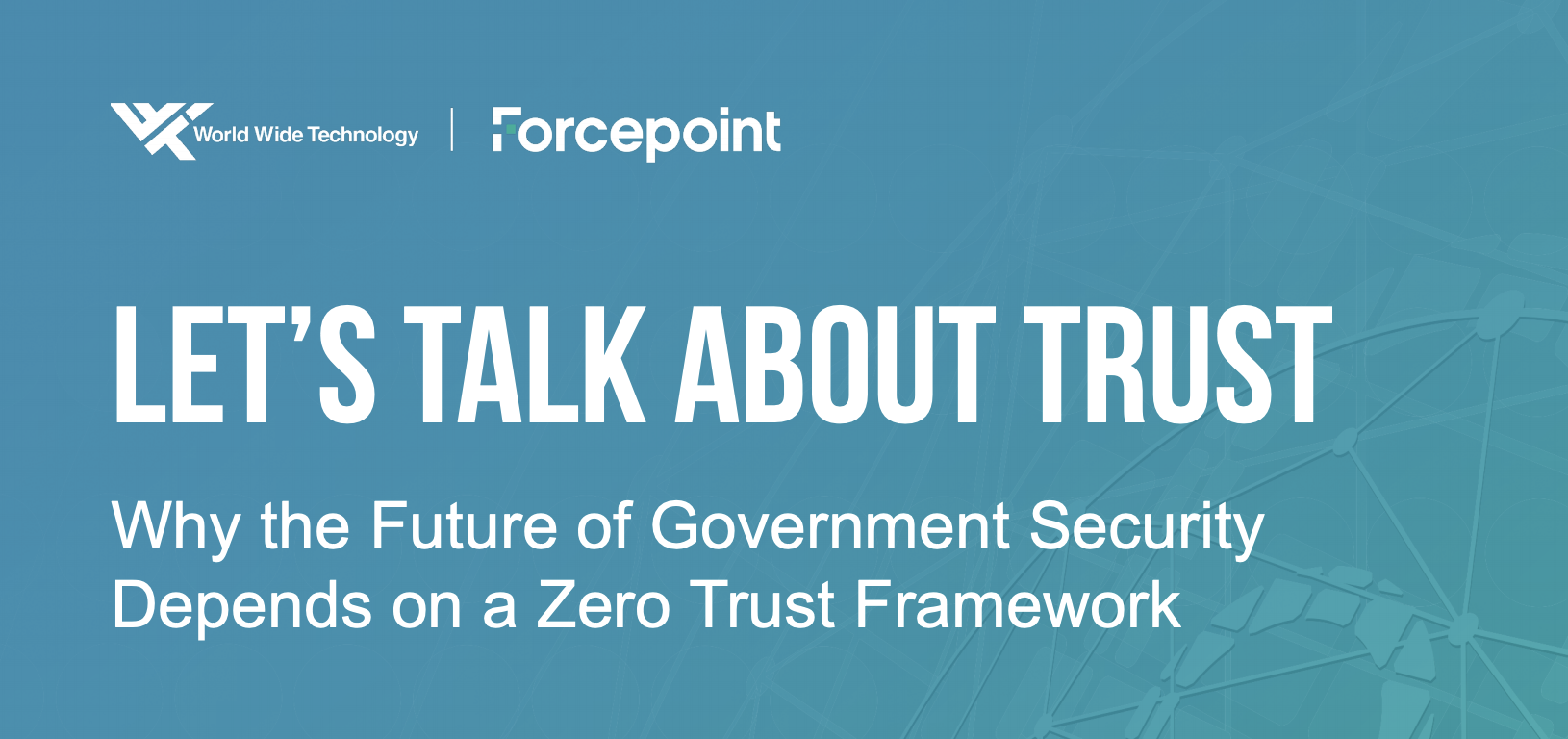Let’s Talk About Trust: Why the Future of Government Security Depends on a Zero Trust Framework
In a recent GovExec webcast, government and industry leaders weighed in on how agencies can adopt a Zero Trust architecture. Here are the top takeaways from the event.
Presented by

When it comes to cybersecurity, government agencies can never be too careful. That’s especially true today: As more employees telework, security has become an even greater concern. With fewer users working from the same location, cyberthreats have skyrocketed because of hostile public networks and unstable Wi-Fi. Not only are these threats costly — they can also make it difficult for an agency to effectively fulfill its mission.
To tackle these complex yet common security challenges, many public sector organizations are embracing a Zero Trust architecture. This framework, which has gained prominence in the public and private sectors over the last decade, calls for a proactive, risk-based approach to cybersecurity, requiring systems verify users inside or outside its perimeter before granting them access. Zero Trust takes into consideration a number of factors before granting access, including the nature of the request and the user’s location, access patterns and system configuration.
At "Strategies for Implementing and Operating a Zero Trust Architecture," a recent GovExec webcast sponsored by World Wide Technology and Forcepoint, government and industry leaders came together to share best practices around how agencies can drive adoption of Zero Trust across the public sector.
Check out the article below for the key takeaways from the event!
This content is made possible by our sponsors World Wide Technology and Forcepoint; it is not written by and does not necessarily reflect the views of Government Executive's editorial staff.
NEXT STORY: Contact Tracing Programs Survey Findings and Recommendations





.pdf)
.pdf)